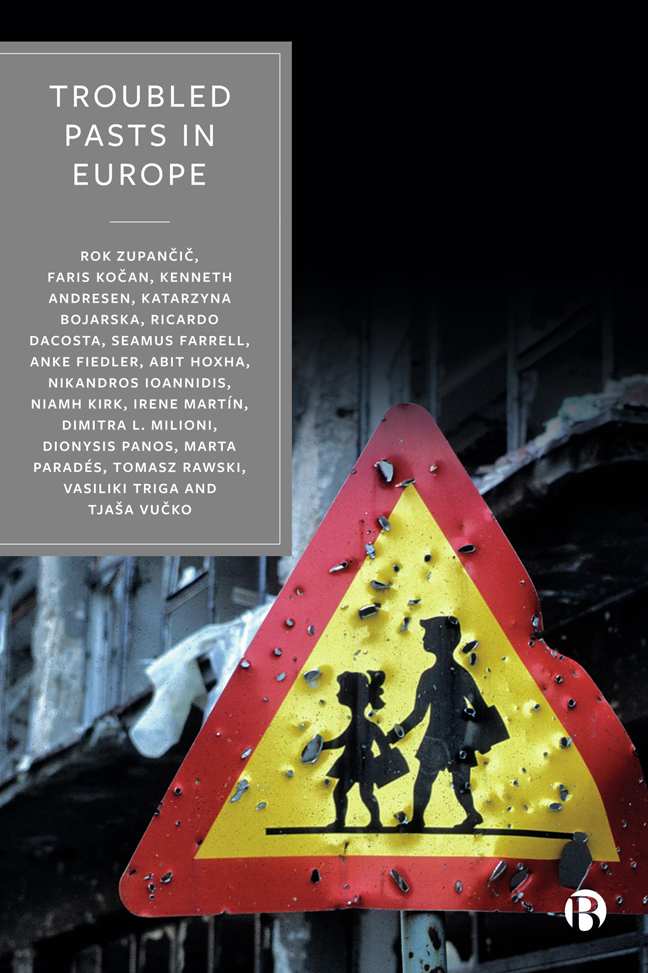 Troubled Pasts in Europe
Troubled Pasts in Europe Published online by Cambridge University Press: 25 January 2024
Introduction
Before the Second World War, about one-third of the population of Poland were members of national minorities, including Ukrainians, Jews, Belarusians and Germans. However, as a result of the Nazi and Soviet invasion of Poland, the Holocaust, the expulsion of Germans and the resettlement of Ukrainians, the post-1945 Poland became an ethnically homogeneous nation-state. It is estimated that about 5.7 million Polish citizens lost their lives during the German occupation and about 150,000 Polish citizens lost their lives during the Soviet occupation. In the aftermath of the war, Poland was a state with reduced sovereignty. The communist Polish United Workers’ Party gained firm control over domestic politics, which nonetheless remained under the Soviet influence.
In the period 1945–89, the country's memory politics was fully dependent on the narrative dictated by the state and influenced by the pro-Soviet optics. However, the collective memory, the acts of oppositional memory, and oppositional commemorative acts recurred in this period and re-emerged in the early 1990s. This is when many troubled past issues entered the public sphere from various vantage points and in various ways, including the Holocaust, the Roma genocide, forced sexual labour of women and rape as a war crime, the Polish–Ukrainian conflicts, the Polish anti-Semitism and the role of Poles in the Nazi genocide, the participation of Poles in the communist regime and in oppositional movement against the regime. These and many other elements of the Polish troubled past have been used and abused in public debates, in which participate politicians, cultural and artistic institutions, writers and artists, non-governmental organizations (NGOs) and academics.
Although in post-1989 Poland this conversation has been multidimensional, two dominant competing trends/narratives can be distinguished: the so-called ‘pedagogy of shame’ versus the so-called ‘patriotic pride’. The former one is associated with European integration, modernization, emancipation and equality within the European Union (EU), where Poland features as a partner who has worked through its historical traumas, recompensated for the guilt and so on. It was called the ‘pedagogy of shame’ by right-wing historians and journalists. On the other hand, ‘patriotic pride’ is associated with nationalistic, Catholic, conservative and anti-European positions.
To save this book to your Kindle, first ensure [email protected] is added to your Approved Personal Document E-mail List under your Personal Document Settings on the Manage Your Content and Devices page of your Amazon account. Then enter the ‘name’ part of your Kindle email address below. Find out more about saving to your Kindle.
Note you can select to save to either the @free.kindle.com or @kindle.com variations. ‘@free.kindle.com’ emails are free but can only be saved to your device when it is connected to wi-fi. ‘@kindle.com’ emails can be delivered even when you are not connected to wi-fi, but note that service fees apply.
Find out more about the Kindle Personal Document Service.
To save content items to your account, please confirm that you agree to abide by our usage policies. If this is the first time you use this feature, you will be asked to authorise Cambridge Core to connect with your account. Find out more about saving content to Dropbox.
To save content items to your account, please confirm that you agree to abide by our usage policies. If this is the first time you use this feature, you will be asked to authorise Cambridge Core to connect with your account. Find out more about saving content to Google Drive.